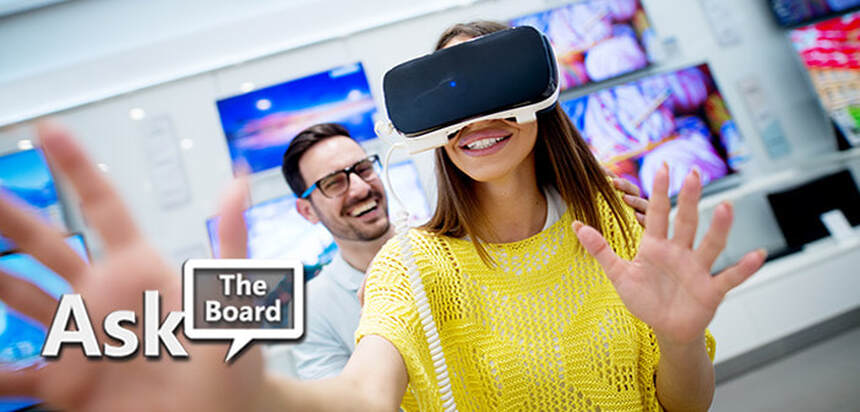|
What role do you see VR playing in helping shape the retail experience? And can you name anyone who is doing it right? Retail is experiencing major transformations and exploring new ways to connect with customers through immersive experiences. Ever advancing developments in technology are enabling more compelling and unique retail experiences to emerge, which present a strong brand identity and an opportunity to strengthen customer loyalty. Virtual reality and Augmented reality can add very strong visual sensory elements to a retail experience to make it more immersive. Some brands are incorporating interesting virtual experiences and games in retail that offer in-person interactions that set physical stores apart from other channels and make them more appealing to visit.
One example of an innovative brand that embraces new technology is Nike who is well known for immersive retail. Recently they launched www.youtube.com/watch?v=JJliIaKTtEo a unique wear test experience that puts the wearer into their own video game. The experience is available exclusively at Nike store installations in China. Customers lace up a pair of the Epic React Flyknit and then their faces are scanned to be transported into “Reactland,” which is a three-minute long virtual reality video game that each participant plays by running on a treadmill and operating a handheld controller. Their pixelated avatars run through various settings including panda-filled jungles, on top of a train, on the city streets, and even in the clouds. Runners can even share a 10-second clip of their gameplay on social media when they complete the game. This is not the first time Nike has made an attempt at changing the way consumers purchase sneakers. Over the past year, it has also created augmented reality experiences for certain limited releases like the Staple x Nike 58 Dunk Low “Black Pigeon” and more recently the “Tinker” Air Jordan 3. Another smaller brand delivering a very interesting immersive retail example is Six Hundred Four, a new sneaker brand that creates shoes based off commissioned art pieces, recently launched a VR sneaker store that harmoniously merges VR and e-commerce. It allows virtual visitors to conveniently stroll around their flagship store, viewing the original art pieces while effortlessly adding shoes to their shopping cart and it doesn’t require a headset. Both these brands and most others are primarily focused on marketing to Millennials. Millennials now form the largest spending age group on the planet. Millennial brand engagement, like all things, is going through a transformation as new technologies emerge that can either further leverage their current behaviours or instil new ways of engaging with brands. Shikatani Lacroix initiated a consumer study in the U.S. to understand how new immersive technologies, such as VR and AR are influencing how Millennials make their purchase decisions, and to determine the emerging trends marketers should take into consideration. Millennials are much more mobile and gaming-enabled and are eager to engage with and utilize interactive and immersive in-store experiences. They are more open to change and adoption of new technologies and processes. 40 percent of Millennials are open to risk and exploring new technologies, which opens the door to the use of innovative immersive engagement platforms. Ultimately Millennials see themselves as innovators and early adopters to new technology, which supports new purchase behaviour approaches. The study suggest that Millennials look for retail experiences offering virtual demonstration areas that they can view with VR Gear, the ability to receive personalized messages and offers on their smart phones, digital shelf signs that identify social media comments and votes, virtual fitting rooms where they can try a wide range of products quickly, and finally stores with large digital signs that communicate offers effectively. Millennials are open to new technologies and view them as effective tools in helping them make their purchase decisions. In order to remain relevant and continue to feed the hunger for new immersive retail experiences brands need to adopt new ways to connect emotionally with customers at retail. VR will only continue to grow and thrive as a great medium to help brands connect with customers and win the at-purchase moment. Marcos Terenzio
0 Comments
Leave a Reply. |
Archives
April 2021
Insights LinksView more of my industry thought leadership and educational insights:
SEGD Educator, Member, and Speaker
RGD Mentor, Member, and Educator
Digital Signage Federation
Toronto Council Board Member, Educator, and Speaker Digital Signage Connection
Content Advisory Board DSE Advisory Board
|







